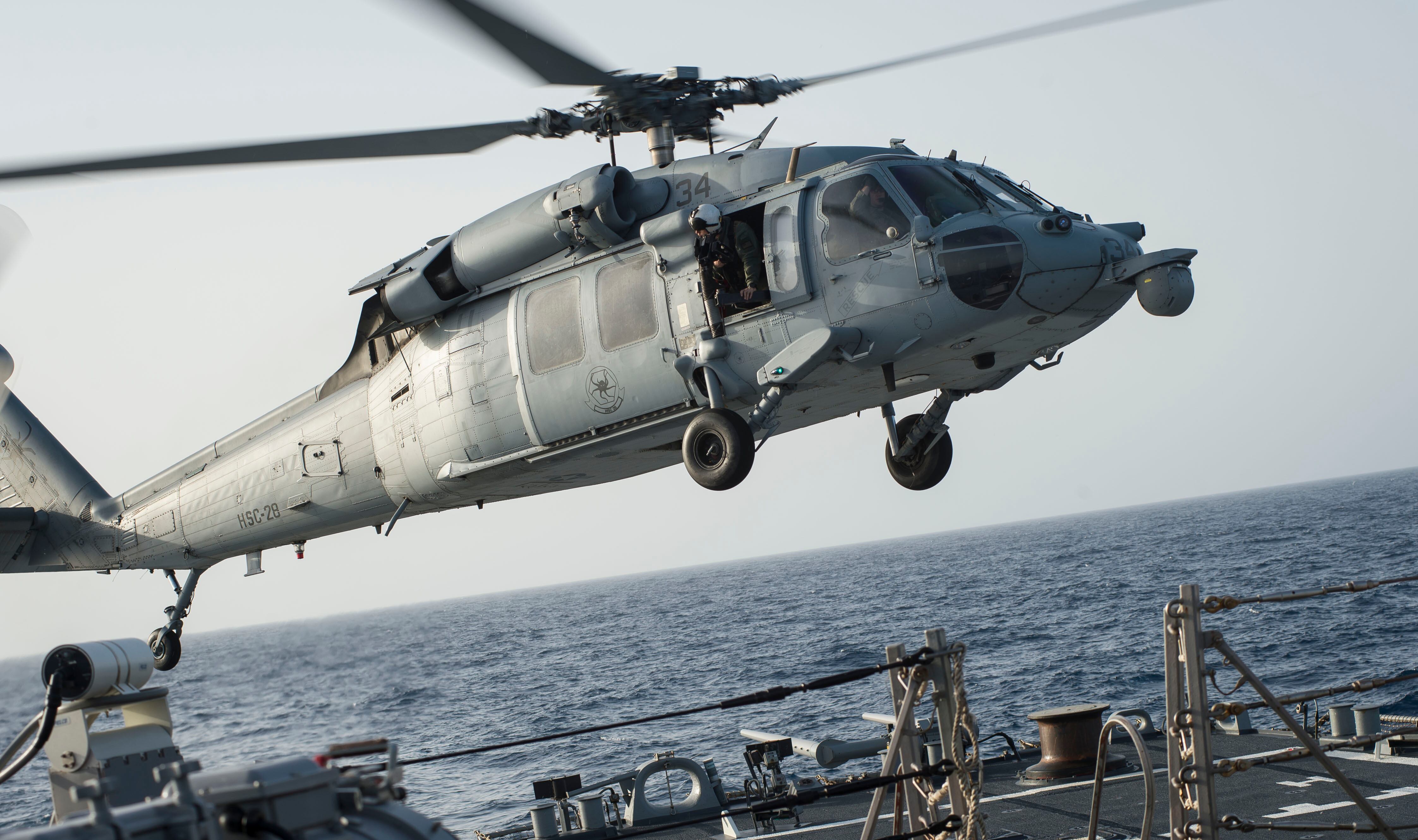One of the Navy’s newest electronic warfare programs is slated for what’s known as a “critical design review” — a technical audit to ensure any systems produced under the program can meet performance, cost, schedule and risk baselines.
The Advanced Off-Board Electronic Warfare (AOEW) design is a self-contained sensor pod that will be outfitted to MH-60 Sierra and Romeo helicopters to extend a ship’s line-of-sight limitations in the electromagnetic spectrum. Executives at Lockheed Martin, the payload’s designer, said they’re on track for the CDR and testing in late June or early July.
RELATED

“It is a very fast program,” Joseph Ottaviano, director of electronic warfare systems at Lockheed Martin, told C4ISRNET during an interview April 9 at the Navy League’s Sea Air Space conference, adding it’s only been a little over a year since the award to CDR.
Part of the speed has to do with understanding the electronic warfare infrastructure the Navy wants, Ottaviano said. Citing a quote from a flag officer, he noted the Navy’s EW approach is now one of enterprise protection.
In the past EW was taken as more of an anti-ship missile defense approach to an individual ship, but things are changing.
“You’re defending not just yourself, but the battle group,” Ottaviano said.
While not divulging much detail, Ottaviano also added that AOEW — and even the Surface Electronic Warfare Improvement Program, for which Lockheed is working on Block 2 — can share its data with other assets.
This creates a more holistic situational understanding of what signals exist within a certain area — informing not just the Navy, but the joint force.
Mark Pomerleau is a reporter for C4ISRNET, covering information warfare and cyberspace.








